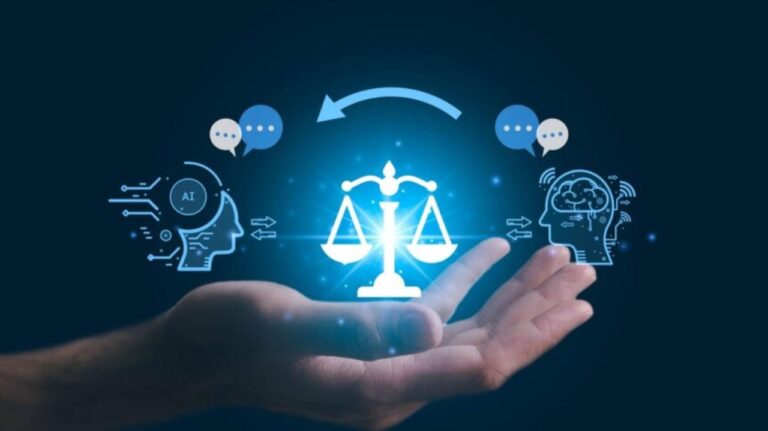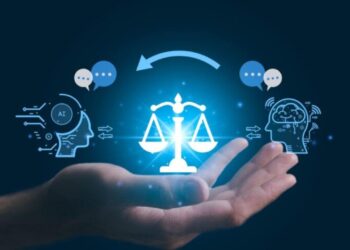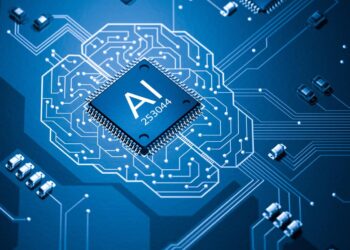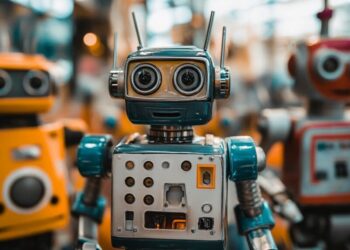The Core Dilemmas
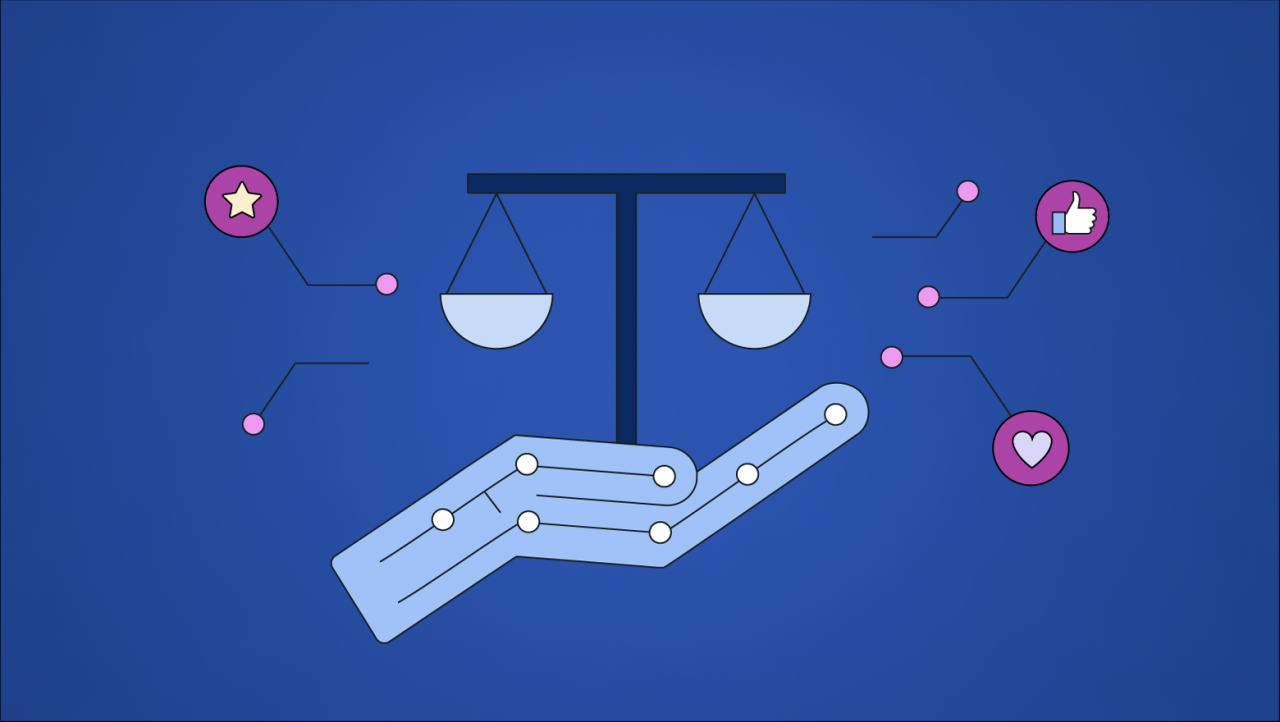
At its essence, AI ethics seeks to ensure that the design, development, and deployment of AI systems align with human values, societal norms, and legal principles, preventing unintended harm and promoting beneficial outcomes.
A. Bias and Discrimination
AI systems learn from the data they are fed. If this data reflects historical or societal biases, the AI will not only learn those biases but can also amplify them in its decisions.
- Data Bias: AI models trained on unrepresentative, incomplete, or historically prejudiced datasets will inevitably produce biased outcomes. For example, facial recognition systems trained predominantly on lighter skin tones may perform poorly on darker skin tones, leading to misidentification or unfair treatment. Recruitment AI trained on historical hiring data may inadvertently learn gender or racial biases.
- Algorithmic Bias: Even with unbiased data, the algorithms themselves can introduce bias through their design or optimization objectives. This can lead to certain groups being unfairly advantaged or disadvantaged.
- Consequences: Discriminatory outcomes in critical areas like loan approvals, hiring decisions, criminal justice sentencing, medical diagnoses, and resource allocation.
- Challenge: Detecting and mitigating bias is complex. It requires diverse and representative datasets, transparent algorithms, and ongoing auditing. “Fairness” itself can have multiple mathematical definitions, and choosing one involves ethical trade-offs.
B. Transparency and Explainability
Many advanced AI models, particularly deep learning neural networks, operate as “black boxes,” making it difficult or impossible for humans to understand how they arrive at a particular decision.
- Lack of Interpretability: It’s often hard to trace the exact reasoning path of an AI, even when its decisions have significant consequences (e.g., denying a loan, flagging a patient for a certain condition).
- Trust Deficit: If we don’t understand why an AI made a decision, it erodes trust, especially in high-stakes environments.
- Accountability Gap: Without transparency, it’s challenging to identify where a mistake occurred or who is responsible when an AI errs.
- Challenge: Developing Explainable AI (XAI) techniques that provide insights into an AI’s decision-making process, balancing interpretability with model accuracy and complexity. This is crucial for debugging, auditing, and building trust.
C. Accountability and Responsibility
As AI systems become more autonomous, determining who is responsible when something goes wrong becomes a complex legal and ethical dilemma.
- Autonomous Systems: If an autonomous vehicle causes an accident, is the fault with the manufacturer, the software developer, the owner, or the AI itself?
- Distributed Responsibility: AI development often involves multiple parties (data scientists, engineers, product managers, end-users), complicating the assignment of blame.
- Human Oversight: Defining the appropriate level of human oversight for autonomous AI systems, especially in mission-critical applications.
- Challenge: Establishing clear legal frameworks and ethical guidelines that assign responsibility for AI-driven outcomes, considering the degree of autonomy and human control.
D. Privacy and Data Governance
AI thrives on data, raising significant concerns about the collection, storage, use, and security of personal information.
- Massive Data Collection: AI systems require vast amounts of data for training, often including sensitive personal, biometric, or behavioral information.
- Surveillance Risks: Ubiquitous AI-powered sensors (e.g., facial recognition cameras, voice assistants) can enable unprecedented levels of surveillance, eroding individual privacy and civil liberties.
- Data Security: Protecting massive AI datasets from breaches and unauthorized access is a constant challenge.
- Consent: Ensuring meaningful informed consent for data collection and use, especially when AI applications evolve over time.
- Challenge: Developing robust data governance frameworks, privacy-enhancing technologies (e.g., federated learning, differential privacy, zero-knowledge proofs), and strong regulations (like GDPR) that balance AI innovation with individual privacy rights.
E. Job Displacement and the Future of Work
The potential for AI and automation to displace human jobs is a significant economic and societal concern.
- Automation of Tasks: AI can automate repetitive physical and cognitive tasks, impacting various sectors from manufacturing to customer service and even knowledge work.
- Skills Gap: While AI creates new jobs, it also demands new skills, potentially leading to a widening skills gap and exacerbating inequality.
- Economic Inequality: If the economic benefits of AI primarily accrue to a small elite, it could worsen wealth disparities.
- Challenge: Proactive workforce planning, massive investment in reskilling and upskilling programs, adapting social safety nets, and exploring new economic models (e.g., Universal Basic Income) to manage the transition.
AI Ethics Across Diverse Applications
The ethical considerations of AI are not abstract; they manifest in concrete ways across various industries and societal functions.
A. Healthcare and Medicine
AI in healthcare promises breakthroughs but carries immense responsibility.
- Diagnostic Bias: AI trained on data from specific demographics might misdiagnose conditions in underrepresented groups, leading to disparities in care.
- Accountability for Errors: If an AI assists in a misdiagnosis or recommends a harmful treatment, who is legally and ethically responsible?
- Data Privacy (PHI): Protecting highly sensitive patient health information used by AI systems.
- Transparency in Treatment Recommendations: Patients and doctors need to understand why an AI recommended a particular course of treatment to make informed decisions.
- Ethical AI in Drug Discovery: Ensuring AI-driven drug discovery processes don’t lead to biases in drug efficacy across populations.
B. Criminal Justice and Law Enforcement
AI’s application in justice systems carries high stakes for individual liberties.
- Predictive Policing: AI algorithms attempting to predict crime hotspots or individuals likely to commit crimes can perpetuate existing biases in policing, leading to over-surveillance or disproportionate arrests in certain communities.
- Facial Recognition: Concerns about mass surveillance, privacy erosion, and potential for misidentification (especially for minorities), leading to wrongful arrests.
- Risk Assessment Tools: AI used to assess recidivism risk in sentencing or parole decisions can embed and amplify historical racial or socioeconomic biases, leading to unfair outcomes.
- Transparency: The “black box” nature of these algorithms makes it difficult for defendants to challenge the evidence or reasoning used against them.
C. Finance and Lending
AI in finance can streamline processes but also entrench inequalities.
- Credit Scoring Bias: AI used for loan applications or credit scoring might inadvertently discriminate based on race, gender, or zip code if trained on biased historical data, even if those factors are not explicitly used.
- Automated Trading Ethics: The ethical implications of high-frequency trading algorithms that can trigger flash crashes or exploit market inefficiencies.
- Fairness in Insurance: AI determining insurance premiums might discriminate based on data points that correlate with protected characteristics.
- Algorithmic Transparency: Explaining to consumers why they were denied a loan or offered a particular rate.
D. Education
AI can personalize education but risks exacerbating existing inequalities.
- Learning Bias: AI tutors or assessment tools might unintentionally favor certain learning styles or cultural backgrounds present in their training data.
- Data Privacy for Students: Protecting sensitive student data (academic performance, behavioral patterns) collected by AI-powered educational platforms.
- Algorithmic Gating: AI determining access to advanced learning paths or resources based on potentially biased assessments.
- Digital Divide: Access to cutting-edge AI-powered learning tools might be unevenly distributed, exacerbating educational disparities.
E. Social Media and Content Moderation
AI is crucial for content moderation but faces immense ethical challenges.
- Censorship and Free Speech: AI algorithms moderating content can be overly aggressive, leading to wrongful censorship, or too lenient, failing to remove harmful content. Bias in training data can lead to differential treatment of certain viewpoints or groups.
- Misinformation and Deepfakes: AI’s ability to generate highly realistic fake content (text, audio, video) poses significant threats to truth, trust, and democratic processes.
- Echo Chambers and Polarization: AI algorithms optimizing for engagement can inadvertently create filter bubbles and amplify extremist content, contributing to societal polarization.
- User Manipulation: Concerns about AI algorithms subtly influencing user behavior, purchasing decisions, or political views.
Frameworks and Methodologies
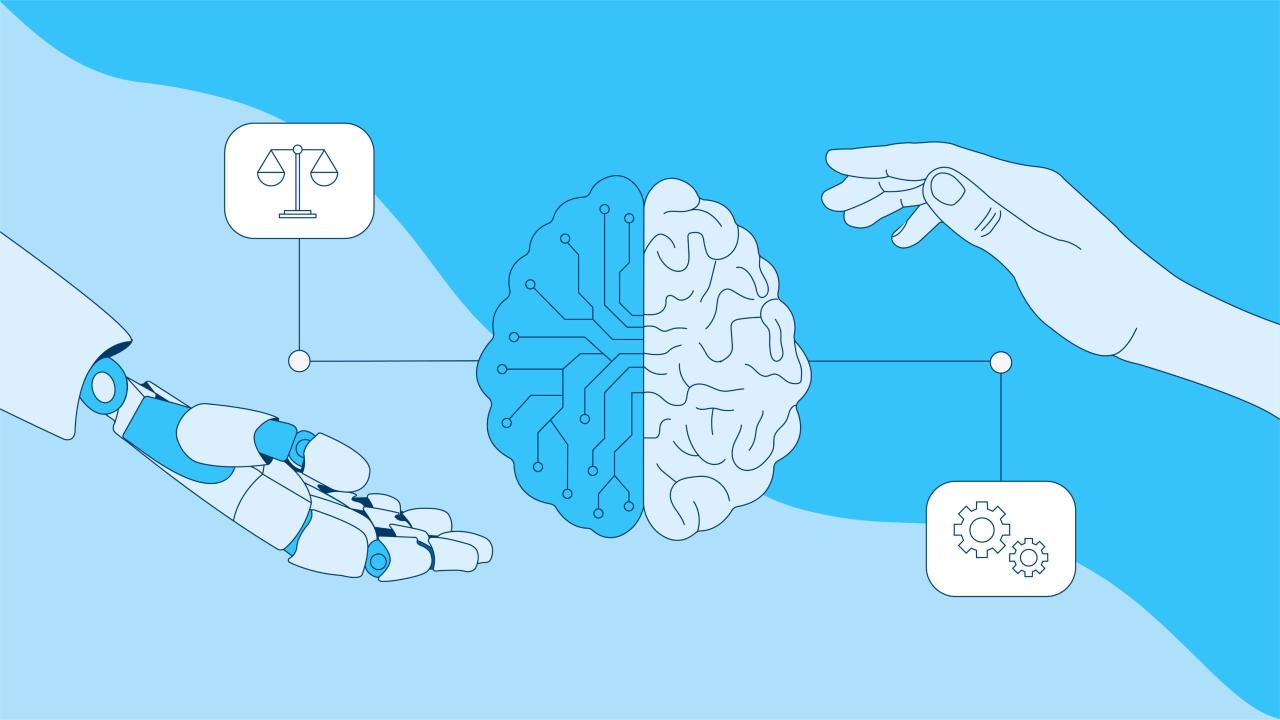
Addressing AI’s ethical challenges requires a multi-faceted approach, involving researchers, policymakers, industry, and civil society.
A. Ethical AI Principles
Numerous organizations have proposed sets of guiding principles for ethical AI development. While varying in specifics, common themes emerge:
- Fairness and Non-discrimination: AI systems should treat all individuals and groups equitably and avoid bias.
- Transparency and Explainability: AI decisions should be understandable, and their reasoning processes should be inspectable where appropriate.
- Accountability: Mechanisms should be in place to ensure that humans are ultimately responsible for AI’s actions.
- Privacy and Security: Personal data used by AI must be protected, and AI systems must be secure against malicious attacks.
- Human Agency and Oversight: AI should augment, not diminish, human control, dignity, and autonomy.
- Beneficence and Harmlessness: AI should be designed to do good, promote well-being, and avoid causing harm.
- Robustness and Reliability: AI systems should be reliable, secure, and perform consistently in diverse conditions.
- Sustainability: Considering the environmental impact of AI development and deployment (e.g., energy consumption of large AI models).
These principles serve as a moral compass for AI developers and policymakers.
B. Methodologies for Ethical AI Development
Translating principles into practice requires specific methodologies.
- Bias Detection and Mitigation Techniques: Techniques to identify and reduce bias in datasets and algorithms (e.g., re-sampling, adversarial de-biasing, fairness-aware machine learning).
- Explainable AI (XAI) Tools: Developing tools that provide insights into AI decision-making (e.g., LIME, SHAP values, attention mechanisms in neural networks).
- Ethical AI Review Boards: Establishing interdisciplinary committees to review AI projects for ethical implications before deployment.
- Red Teaming and Adversarial Testing: Proactively testing AI systems for vulnerabilities, biases, and unintended behaviors.
- Impact Assessments: Conducting “AI impact assessments” or “algorithmic impact assessments” to evaluate potential societal and ethical consequences before deploying AI systems.
- Human-in-the-Loop Design: Designing systems where human oversight and intervention are integrated, especially for critical decisions.
- Privacy-Preserving AI: Using techniques like federated learning, differential privacy, and homomorphic encryption to train and deploy AI models while protecting sensitive data.
- Secure AI: Protecting AI models from adversarial attacks (e.g., data poisoning, model evasion) that could compromise their integrity or fairness.
C. Regulation and Governance
Governments worldwide are grappling with how to regulate AI effectively.
- Horizontal vs. Vertical Regulation: Debating whether to regulate AI broadly across all applications (horizontal) or specifically for certain high-risk sectors (vertical).
- Risk-Based Approach: Regulations that categorize AI systems by risk level, with stricter rules for high-risk applications (e.g., EU AI Act).
- Auditing and Certification: Requiring independent audits and certification for certain AI systems to ensure compliance with ethical guidelines.
- Data Governance Frameworks: Strengthening data protection laws (e.g., GDPR) to cover AI’s extensive data needs.
- International Cooperation: The global nature of AI development necessitates international collaboration on norms, standards, and regulatory harmonization.
Fostering Responsible AI Innovation
The future of AI ethics is a dynamic interplay between rapid technological advancement and the development of robust, adaptive governance.
A. AI for Good
Beyond mitigating risks, the ethical imperative also involves harnessing AI for positive societal change.
- Climate Change: AI for predicting climate patterns, optimizing renewable energy grids, and developing sustainable materials.
- Healthcare Access: AI-powered diagnostics and telemedicine to improve healthcare access in underserved regions.
- Disaster Response: AI for predicting and responding to natural disasters, optimizing resource allocation.
- Education: AI for personalized learning and making education more accessible.
- Accessibility: AI tools that assist individuals with disabilities (e.g., real-time transcription, navigation aids).
B. Interdisciplinary Collaboration
Addressing AI ethics requires perspectives from diverse fields.
- Technologists and Ethicists: Bringing together AI developers with philosophers, sociologists, lawyers, and policymakers.
- Social Scientists: Understanding the societal impact, cultural nuances, and potential biases embedded in AI.
- Legal Experts: Developing enforceable laws and regulations that keep pace with AI innovation.
- Civil Society and Public Engagement: Involving the broader public in discussions and decision-making processes regarding AI’s future.
C. Ethical AI in Practice
Companies are increasingly recognizing the importance of ethical AI for trust and competitiveness.
- Dedicated Ethical AI Teams: Establishing internal teams or roles focused on AI ethics and responsible AI development.
- Responsible AI Toolkits: Developing internal tools and guidelines for developers to integrate ethical considerations into their workflows.
- Transparency Reports: Publishing reports on AI system performance, bias audits, and ethical practices.
- Ethical Supply Chains for AI: Ensuring that the data and components used in AI development are ethically sourced.
Conclusion
The debate around AI Ethics is not a barrier to innovation, but rather an essential moral compass guiding humanity through the complexities of the Artificial Intelligence age. From mitigating inherent biases and ensuring transparency to establishing clear accountability and protecting fundamental human rights, the ethical dilemmas posed by AI are profound and far-reaching. While the challenges are significant—requiring robust regulation, continuous technological innovation, and a profound societal shift—the imperative to develop and deploy AI responsibly is undeniable. By fostering interdisciplinary collaboration, prioritizing fairness and human agency, and embedding ethical considerations into every stage of AI’s lifecycle, we can ensure that this transformative technology serves as a powerful force for good, augmenting human potential and building a future that is not just intelligent, but also just, equitable, and aligned with our deepest human values. The future is being shaped by AI, and our ethical choices today will determine its ultimate trajectory.

